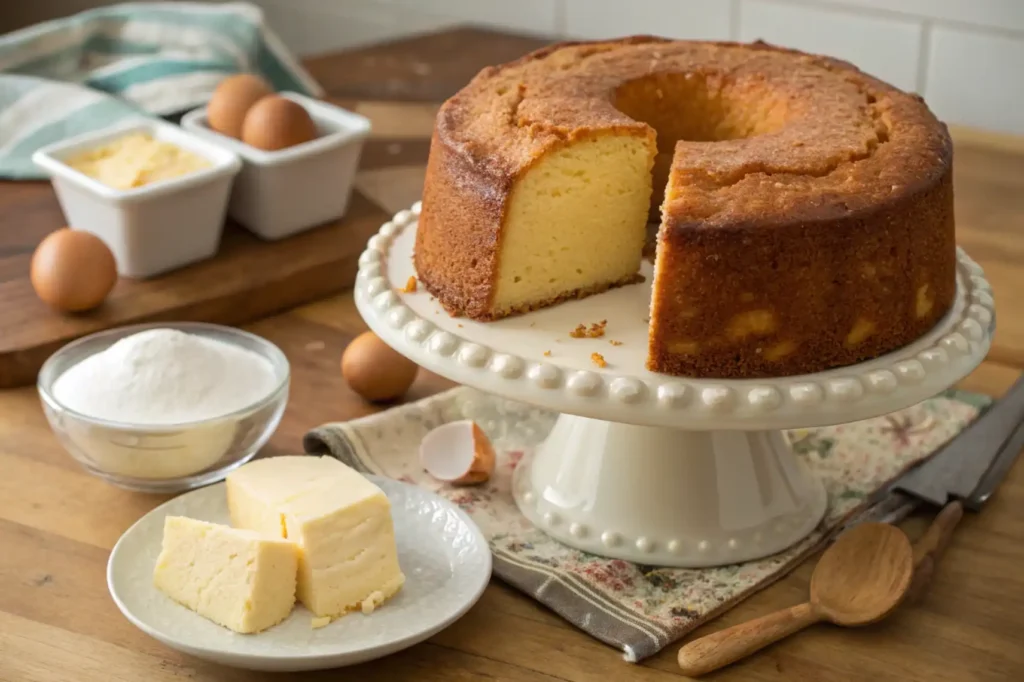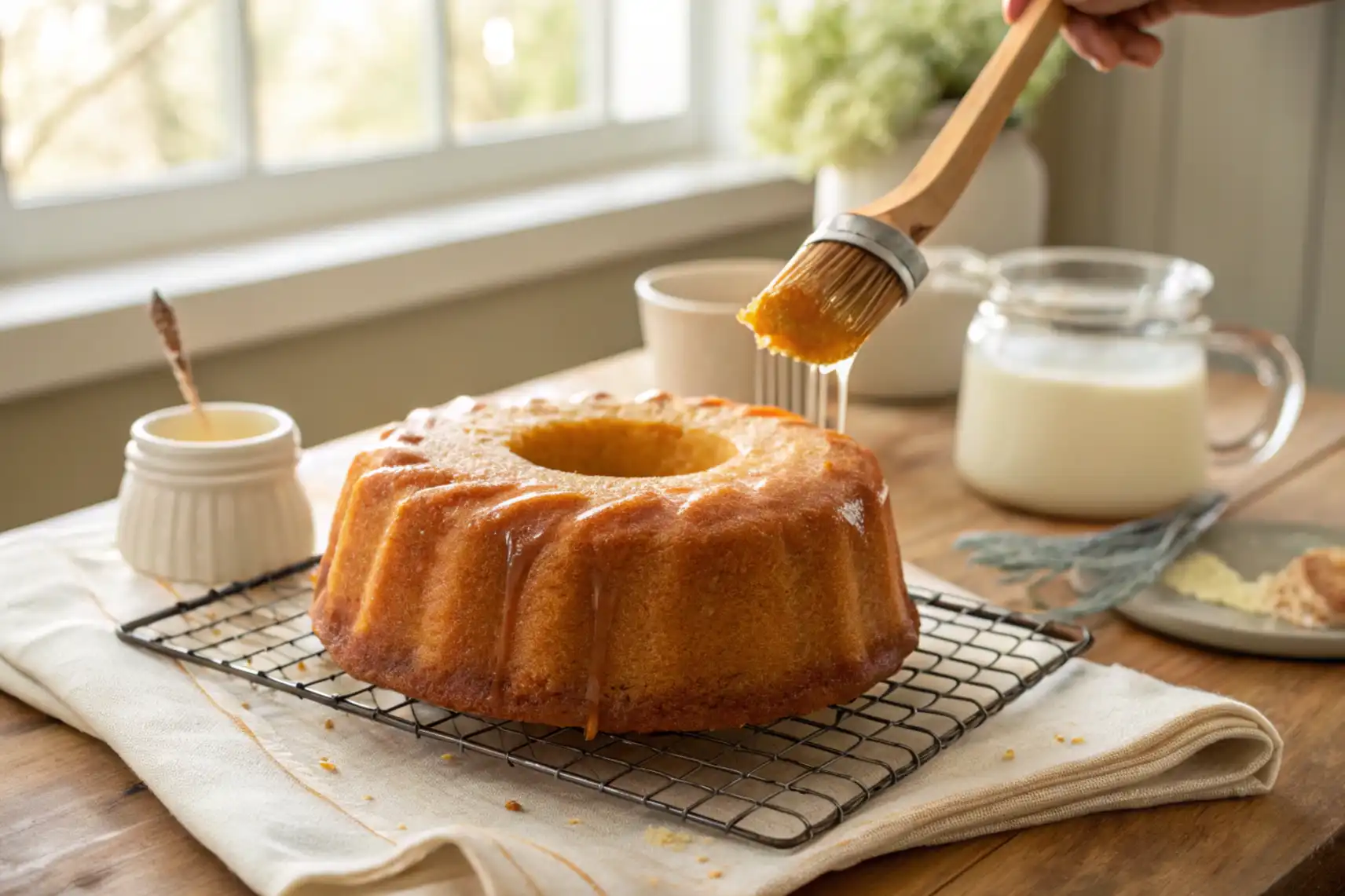

How Do You Keep Pound Cake Moist?
Making a perfect pound cake that stays moist can be a tricky task. Whether you’ve baked pound cakes before or are just starting, the challenge of keeping it tender, soft, and delicious can sometimes seem daunting. But don’t worry! In this guide, we’ll walk you through everything you need to know, from why moisture matters to the best techniques and tips to keep your pound cake perfectly moist. Whether you prefer a traditional recipe or like experimenting with add-ins, we’ve got you covered. Let’s dive in!
Part 1: Understanding Pound Cake and Why Moisture Matters
What Is Pound Cake?
Pound cake, named for the classic recipe that uses one pound each of butter, sugar, eggs, and flour, is a rich and dense cake that’s both simple and satisfying. While the basic ingredients have remained the same over the centuries, many bakers now use variations to add flavor and texture. This cake is perfect for celebrations, teas, or just a simple afternoon snack, and its moistness can make or break the final product.
Why Is Moisture Important in Pound Cake?
When it comes to baking, moisture is everything. A moist pound cake will have a soft, tender crumb, giving you that perfect melt-in-your-mouth texture. Without enough moisture, your cake can turn out dry, crumbly, and less flavorful. The moisture in pound cake also plays a role in keeping it fresh for longer. If you’ve ever had a dry slice of cake, you know how quickly it can become unappealing. So, maintaining that moisture is key to a successful pound cake.
But why does moisture seem so elusive for some bakers? Let’s explore that next.
Common Causes of Dry Pound Cake
Dry pound cake can happen for several reasons, and understanding the cause is the first step in fixing it. Here are a few common culprits:
Overbaking Pound Cake
Overbaking is one of the biggest reasons why pound cakes turn dry. The longer the cake is exposed to heat, the more moisture it loses. It’s tempting to leave the cake in the oven a little longer, especially when it doesn’t seem done, but the result can be a dry, crumbly texture. Always check for doneness by gently pressing the top; if it springs back, it’s ready!
Undermixing or Overmixing the Batter
Both under- and overmixing the batter can lead to a dry pound cake. When you don’t mix the ingredients enough, the flour might not fully hydrate, leading to a dense, dry texture. On the flip side, overmixing can cause too much air to be incorporated into the batter, making it dry and crumbly as it bakes. Achieving the right balance in mixing is crucial for keeping your cake moist and tender.
Incorrect Ingredients or Measurements
Using the wrong ingredients or incorrect measurements can also affect the moisture level. For instance, if you mistakenly add too much flour, it will absorb more liquid, making the cake drier. Similarly, if you’re using low-fat alternatives like skim milk or margarine instead of butter or full-fat milk, your cake may lack the moisture needed for that rich, tender crumb. Stick to the recipe and use quality ingredients to ensure the best results.
Using the Wrong Kind of Flour
Believe it or not, the type of flour you use can also affect the moisture of your pound cake. All-purpose flour is typically recommended for a reason—it strikes a good balance between softness and structure. If you use bread flour, for example, it will give the cake a denser texture, which can lead to dryness. Stick to the correct flour type, and if you’re using a gluten-free option, be mindful of the additional moisture needs.
Understanding these key factors will help you troubleshoot any issues with dryness. In the next part, we’ll dive deeper into the techniques and tips that can keep your pound cake moist.
Part 2: Techniques for Keeping Pound Cake Moist
Using the Right Ingredients for Moisture
To bake the most moist pound cake possible, the ingredients you choose are just as important as the technique. Let’s look at a few ingredients that can add that desired softness and richness.
The Role of Butter, Oil, and Sour Cream
Butter is a classic pound cake ingredient, and for good reason—it adds richness and helps maintain a moist crumb. But for even more moisture, many bakers incorporate oil into the recipe. Oil is a liquid fat, and it stays in liquid form even after baking, which helps prevent the cake from drying out. A combination of butter and oil is often the secret to achieving a perfectly moist cake.
Sour cream is another ingredient that can contribute to a moist pound cake. The tanginess it brings isn’t just for flavor; it also adds moisture and tenderness. A dollop of sour cream helps your cake stay soft and moist for days.
Choosing the Right Flour
The type of flour you use plays a pivotal role in the texture and moistness of your pound cake. All-purpose flour is typically the best option for a tender cake, but some recipes may call for cake flour, which is lighter and can create a finer crumb. If you want to ensure that your cake remains moist, it’s best to avoid using heavier flours, such as bread flour, which may result in a denser, drier texture. If you’re using any type of gluten-free flour, be sure to add extra moisture to compensate.
The Importance of Eggs and Milk
Eggs are essential for structure and moisture. They help bind the ingredients together while keeping the cake soft. If you want to boost the moisture, consider adding an extra egg yolk. Egg yolks contain fat, which will help prevent the cake from drying out.
Milk, especially full-fat milk, plays a crucial role in achieving the right texture. It adds liquid and helps keep the cake tender. For an added moisture boost, some bakers use buttermilk or heavy cream in place of regular milk to enrich the cake and give it a smooth, moist crumb.
Mixing and Baking Tips to Retain Moisture
Even with the right ingredients, the way you mix and bake your pound cake can make a big difference in whether or not it stays moist. Here are a few tips to help:
Proper Mixing Techniques
Mixing is where many bakers go wrong, leading to dry or tough pound cake. If you overmix the batter, you risk incorporating too much air, which can create a dry texture as it bakes. On the other hand, if you under-mix, you could end up with a cake that has uneven moisture distribution. To avoid both pitfalls, mix your ingredients just until they are combined. A few lumps are okay—your batter shouldn’t be perfectly smooth, but it should be uniform.
Correct Oven Temperature and Baking Time
The temperature of your oven can make or break the moistness of your pound cake. Baking at too high a temperature can cause the cake to bake too quickly on the outside, trapping moisture inside and potentially leading to dryness. On the flip side, if the temperature is too low, the cake will bake too slowly and lose moisture throughout the process.
To get it just right, bake at 325°F (165°C). This moderate temperature allows the cake to bake evenly without drying out. Also, make sure to follow the baking time in your recipe carefully. Every oven is different, so check for doneness by lightly pressing on the top of the cake; if it springs back, it’s ready. Avoid opening the oven door too often to keep the temperature steady.
Bundt Pan vs. Loaf Pan
The type of pan you use can also influence how moist your pound cake turns out. A bundt pan, with its multiple ridges and larger surface area, allows the cake to bake more evenly and can result in a moister texture. A loaf pan, while perfectly fine for making pound cakes, may lead to uneven baking, especially if your oven has hot spots.
While both pans work, a bundt pan can help reduce the chances of your cake being too dry. The increased surface area promotes even heat distribution, ensuring that your pound cake bakes to perfection without losing too much moisture.
How to Prevent Overbaking and Underbaking
One of the simplest but most effective ways to keep your pound cake moist is to make sure it’s not overbaked. Overbaking can suck the moisture out, leaving you with a dry, crumbly texture. If you’re unsure whether your cake is done, try the toothpick test. Insert a toothpick into the center of the cake—if it comes out clean or with just a few moist crumbs attached, your cake is ready.
Signs that your cake is done include a golden-brown top that doesn’t shift when gently pressed. If the cake looks too brown on top before it’s fully baked, cover it loosely with foil to prevent burning. On the flip side, don’t be tempted to open the oven door too early, as this can cause the cake to sink or collapse, leaving it undercooked in the middle.
Using Simple Syrup or Glaze to Add Moisture
If you’re concerned about your pound cake drying out, one simple trick is to drizzle it with simple syrup or a glaze after baking. Simple syrup is easy to make—simply combine equal parts sugar and water, and heat until the sugar dissolves. After your cake has cooled slightly, brush it with the syrup to infuse it with extra moisture.
You can also experiment with flavored glazes, like lemon or chocolate, for an added boost of flavor and moisture. These glazes not only keep the cake moist but can also add a delicious finishing touch.
Conclusion
Keeping your pound cake moist doesn’t have to be a challenge. With the right combination of ingredients, careful mixing and baking techniques, and proper storage methods, you can enjoy a tender, flavorful pound cake every time. From adding moisture-boosting ingredients like sour cream and oil to avoiding overbaking, these tips will ensure that your cake stays soft and delicious for days.
By following these techniques and making small adjustments based on your preferences, you’ll soon become a pro at creating the perfect moist pound cake. So, gather your ingredients, preheat that oven, and start baking the most irresistible pound cake that stays moist from the first bite to the last!
Happy baking!
you’ll also love :
Why is Pound Cake Different from Regular Cake? Discover Key Differences and Baking Tips

